LINGUIST







WHY SMALL, UNUSUAL TOWNS BEAT BIG, BUSTLING CITIES

CÁDIZ - THE PEARL OF SPAIN
SIX REASONS TO VISIT SEOUL
SPECIAL EDITION: MEET THE TEAM









WHY SMALL, UNUSUAL TOWNS BEAT BIG, BUSTLING CITIES

CÁDIZ - THE PEARL OF SPAIN
SIX REASONS TO VISIT SEOUL
SPECIAL EDITION: MEET THE TEAM

Editor Claudia Ghilardi offers top tips for visiting Florence from a native’s perspective - PAGE 11

CHAIR: MARY MCGOWAN
SECRETARY: SARAH
DANIELS
TREASURER: BORIS
GENOV
CREATIVE DESIGNER:
ZOE LUMSDEN

PUBLICITY OFFICER +
PORTUGUESE:
VALENTINA K SOMERS
KOHLI
SOCIAL SECRETARY +
UKRANIAN: YELYZAVETA
LIZZIE KOZII
PROOF READER:
REBEKAH QUIXANO
HENRIQUES
PROOF READER + LIFE & STYLE: KSENIYA
SHRIMPTON
CURRENT AFFAIRS: TOM SHACKLOCK
TRAVEL + CHINESE:
HANNAH MEI
CULTURE: MATTHEW
BRUCE
FOOD & DRINK: LIBBY BARRETT
FRENCH + SPANISH:
EMILY DARBY
GERMAN: JENNY
NICHOLLS
RUSSIAN: CHARLOTTE
SIMPSON
ITALIAN: CLAUDIA
GHILARDI
CATALAN: STEWART
TUNSTALL
ARABIC: HECHAM
MUHRA
The UoB Linguist Magazine and the first issue of 2017/18!
If this is your first time reading our magazine, it’s lovely to have you with us. This is a special ‘Meet the Team’ edition, all in English, to help you get to know the people behind the print and see what we’re all about.
We are really proud of our magazine because we are the University of Birmingham’s only publication with an international theme, and we believe this makes us particularly relevant reading in the increasingly multicultural world of today. Normally, our magazine only features five English language sections, which are Current Affairs, Culture, Travel, Life & Style and Food & Drink, and then we also include articles in a wide range of different languages. At the moment, our foreign language sections include French, Spanish, German, Italian, Catalan, Russian, Chinese, Portuguese, Arabic, Ukrainian and even Bulgarian!
Anybody who is a member of the society can contribute
learner at beginner level. Any writing submitted to us will be thoroughly checked through by a native speaker or by our own lovely proofreading team so it’s a fun and practical way of polishing your writing skills. If you happen to speak a language which isn’t included in the list above and you’d like to start a new language section, get in touch! We’d love to help you share your skills with the university community.
This is a special issue for me because it’s my first issue as Chair of the society and having just returned from a year abroad in Spain, I’m really excited to start working with such a fantastic society again. Several other team members have also been away over the last year so if you’re a Modern Languages student weighing up your options, check out articles from Hannah, Matthew, Jenny, Sarah and Stewart to find out about their year abroad experiences.
If you’ve got any questions about our magazine, please don’t hesitate to contact us! Join us on social media to keep up to date with what we’re up to, and don’t forget to become a member of the society on the Guild website. In the meantime, happy reading!
PAGE 3: MEET THE CHAIR
PAGE 4: MEET THE SECRETARY
PAGE 5: MEET THE PROOF READER
PAGE 6: MEET THE CULTURE EDITOR
PAGE 7: MEET THE TRAVEL & CHINESE EDITOR
PAGE 8: MEET THE LIFE & STYLE EDITOR
PAGE 9: MEET THE FOOD & DRINK EDITOR
PAGE 10: MEET THE GERMAN EDITOR
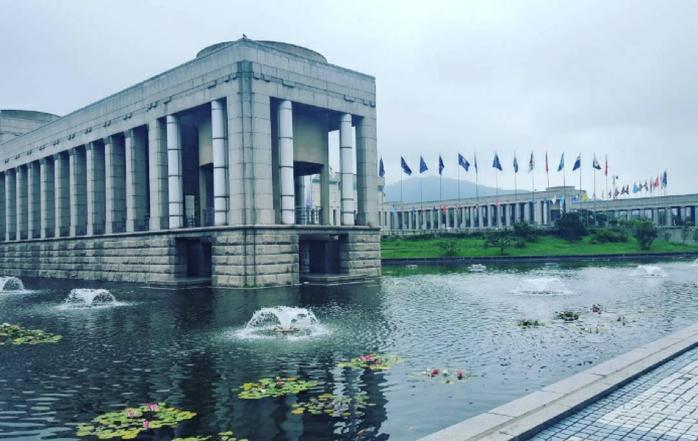
PAGE 11: MEET THE ITALIAN EDITOR
PAGE 12: MEET THE RUSSIAN EDITOR
PAGE 13: MEET THE CATALAN EDITOR
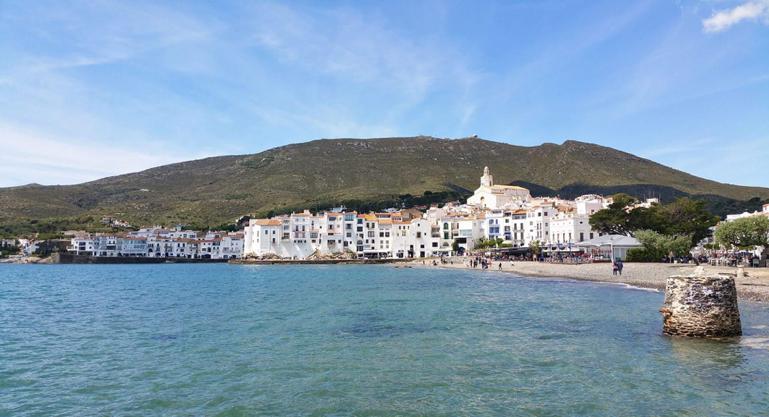
PAGE 14: UOB EXCHANGE SOCIETY

PAGE 15: MEET THE REST OF THE TEAM
If you would like to know more about our magazine, our writers or have comments to make about our articles then feel free to check out our Facebook and Twitter pages or email us. If you wish to read more articles check out our website. We’re always looking for new writers contributors, so don’t hesitate to get in touch!


Among Spaniards, the region of Extremadura is more known for farming pigs than as a tourist destination. Outside the country, Extremadura is barely recognised at all: holidaymakers searching for a quick and easy getaway often overlook the region because it lacks the allure of a Mediterranean coastline. For the novice traveller, this is perhaps well-advised. Very few people speak English, signposted tourist attractions are few and far between, and an all-inclusive deal is hard to come by. However, while it might not be as pictureperfect as Andalusia or as sleek and sophisticated as Madrid, Extremadura has simple, rustic charm and an enduring natural beauty that captures the imagination. Almost entirely untouched by the demands of English tourists, it offers a rich, cultural immersion in a more traditional Spain that doesn’t often make it on the glossy covers of travel magazines.
With a population density of just 26 people per square kilometre (compared to 809 over the same area in Madrid) and three-quarters of inhabitants living in small hamlets and villages, there is no denying that Extremadura is decidedly rural. Local agriculture plays an important part in the community here: regional products, such as the Torta del Casar, a strong, gooey, sheep’s milk cheese, or the world-famous Iberian pork fed on local acorns, are enjoyed and celebrated in town festivals. Extremadura is also home to Monfragüe National Park, famed for its expansive, rocky views and spectacular birdlife. The white storks that cruise calmly overhead are the nationally recognised symbol of Extremadura, illustrated by the big, messy nests that crown every rooftop across the region.
But Extremadura is not just farmland and wildlife. Its cities hold a unique cultural legacy, inherited from a long history of settlement starting with the Romans, through a period of Islamic rule and then a return to Christianity with the Reconquista. This is reflected in the world-class architecture dotted around the region: the capital city, Mérida (formerly Emerita Augusta in Roman times), a UNESCO World Heritage site, boasts the most Roman ruins in Spain, including a beautifully-preserved amphitheatre, a bridge over the Guadiana river and a traditional Roman circus. The city of Cáceres in the northern province of the region also holds a UNESCO World Heritage title, due to the seemingly inexhaustible array of architectural treasures hidden inside its walled city centre. Walking through the old town of Cáceres takes you on an immersive historical journey through different cultures and generations, giving the town a captivatingly dream-like atmosphere.
These assets have not gone entirely unnoticed: the latest series of Game of Thrones was filmed in Cáceres’ old town last year, as well as in various other locations across Extremadura. While its cities might preserve a glimpse of the past, Extremadura’s people are by no means stuck in the olden days. Like much of Spain, the dine-out culture is an important aspect of the Extremaduran lifestyle, and during the long spring and summer months the city streets come to life with happy chatter until long after the sun has gone down. Although not as exuberantly inclined as their southern counterparts, local people are friendly and interested in visitors – if you speak to them in Spanish, that is (watch out for the distinctive accent and be prepared for a strong phonetic reduction and a complete disregard for the letter ‘s’).
Extremadura really is off the beaten track – with no local airport, it takes a four-hour trek from Madrid to arrive at its borders. But for the value of the experience that the region offers, it’s worth it: Extremadura has retained its natural charm and gentle beauty and will enchant and inspire those who make the effort to visit
Role: Chair

Studying: JH English Literature & Hispanic Studies
Languages: Spanish & Portuguese

Favourite foreign food: The town I lived in for my year abroad was very rural and one of its biggest exports was pork. Consequently, I don’t think I spent a single day in Spain without eating pork of some kind and I really miss it! Ham from Aldi just isn’t the same…
Top travel tip: Invest in a good-quality handluggage bag for weekend trips on your year abroad. Skip the baggage charges and the waiting around: pack light and see more!
A view of the old town of Cáceres (the pair of towers on the left are normally white – they were painted pink for the filming of StarCrossed, and American TV series based on Romeo and Juliet).
For the first seven months of my ‘Year Abroad’ last year I was stationed in the village of Charlieu in France, teaching English as a foreign language in the local school. One of the best experiences I had while working here was going on a school trip to Sicily in April. This trip was the fantastic conclusion to my time with my French students, as the beautiful, historical island surprised and delighted me every single day.
As assistants and not teachers, my friend Val and I had the best of both worlds. We enjoyed drinking wine at the adult table, and having our own room in every hotel we stayed in, but we didn’t have to be responsible for the students in any way or do any of the organising! This was fortunate as with 160 seventeen-year olds between three coaches, things got quite chaotic at times!
Visiting somewhere new every day meant a lot of breathtaking scenery, but four places in particular really stood out for me:
1) Zingaro Nature Reserve, on the north coast of Sicily. I can’t get over how beautiful it was; the natural landscape was absolutely breath-taking – an unspoiled paradise! We hiked together to the beach and back (imagine 180 people walking along an occasionally single-track path, it was quite a sight!).
2) The Valle dei Templi in Agrigento the most well-preserved Greek temples I have ever seen, standing proudly together on the hilltops. The tour-guide we had with us when exploring the valley was very informative and interesting, and gave everyone plenty of time for photos!
3)Siracusa was the picture-perfect seaside tourist town I had been longing for after the packed hustle of Palermo. Cobbled pedestrian streets, charming cafés, and great gelato, all framed by the glittering blue ocean. We went on a boat-trip out into the bay and back again – a very relaxing way to spend an afternoon.
4) Another unforgettable hike was in the Mount Etna nature reserve. Etna is an active volcano, and smokes continuously. In fact, on the day we went it had erupted only the night before. We could see the trail of larva from the eruption producing its own smoke-trail as it wound its way slowly down the mountain.

While the trip was great, there were also some school-trip lows to contend with:
● SO MANY long days! We were in the coach every day at 8am, usually with our suitcases packed to move on. We would do one activity in the morning, one in the afternoon, and then drive to our next hotel, sometimes arriving as late as 9pm.
As is traditional on school trips, we took the coaches from school all the way to our destination, which meant a very long journey indeed. We drove all day to Genoa in Italy, then took a 21-hour ferry to Sicily, and did the same
Picnic lunches, traditional school-trip style: one ham roll, one cheese roll, one piece of fruit. I didn’t even manage to eat any Italian pizza!
Overall, we enjoyed 20-degree sunshine, stunning views, and diverse landscapes, with something different to do every day. I can’t wait for the opportunity to return to Sicily’s beautiful shores and mountains, and be able to explore them properly, at
: Secretary : JH French & English Literature
Languages: French

Favourite foreign novel: As a child I loved the ‘Inkheart’ novels by Cornelia Funke. I wish I could read the original German!
Favourite foreign word: ‘Pompette’ means tipsy in French, and is an especially fun word to say whilst tipsy.
Mount Etna nature reserveThe last place you’d expect a city girl to recommended is a small town when going abroad. After spending two months of my summer slightly trapped in Haro, a cosy community in La Rioja, Spain, I can finally see advantages to abandoning traditional big city experiences.

Haro is a petite pueblo , famous for its wine festivals, but other than that, pretty unattractive to most tourists. There are very few retail chains and the closest university and shopping centre is a 40-minute drive away. Why on earth would anyone want to stay here?
The brilliant and slightly scary thing about small towns is that hardly anyone will speak English, compared to tourist-filled cities. With only their native language and gestures to communicate, it is inevitable you will immerse yourself in the culture and language. It’s unlikely even the bartender, baker or cashier in the largest supermarket will speak English. Small towns are ideal for language development and ideal for getting yourself out of your comfort zone and helping you grow. Additionally, you’ll have no choice but to live like a local. Shops won’t be open when you’re used to, there won’t be a £3 meal deal for you to pick up at an outrageously early 12.30pm. Clubs may not even have a soul in them until 3am. You’ll end up eating when they eat, resting when they rest, and partying when they party. There is undoubtedly no better way to understand
Crucially, small towns force you to make conversation with locals. You’ll soon realise the awkward British smile doesn’t quite work as well when you’re passing the same stranger three times a day. It is inevitable there will be a little old lady who joins you on a bench. When she wants to tell you her life story you can’t really back out. The only option is to listen, make conversation and take in this amazing first hand insight into the people of a country. Ultimately, they are perfect for escaping your version of ‘ordinary’. Going to big cities often means you’ll end up speaking English, having a McDonald’s instead of the local cuisine, or shopping in Primark. Of course, this is part of the national culture, but it means you’re sticking to what you already know, and not learning anything new.
Role: Proofreader
Course: B.A Modern Languages


Languages: English, Spanish, Italian, and Portuguese. I'm attempting Polish too right now!
Favourite foreign TV show: El Hormiguero (Hilarious Spanish chat show with talking puppet ants)
Travelling in big cities often means being involved in a culture which is seemingly mute of its own. When in Italy, I’d like to experience the traditionally Italian, and not just something created for tourists.
Small destinations are of course difficult to find, especially without any previous connections to a country and on a budget. However, I found au-pairing and teaching English through a company (meaning you get host families) were brilliant ways of engaging with the cultures of countries and making you aware of life in small towns. Undeniably, I’d still love to travel to big cities like Amsterdam or New York, visit the museums, see the famous sights, and attend free walking tours (yes, they exist, and yes, they're amazing). However, it’s important to remember how big cities, London and Birmingham included, are far from what makes up a whole country. Visiting smaller areas means you have a greater understanding of how the famous cities fit into the identity of a whole country.
If you see the value of travelling as being about engaging in new cultures and experiences, then have no doubt: little towns which foreign tourists rarely visit will beat big bustling cities any day.
La Rioja, Spain“…THEY ARE PERFECT FOR ESCAPING YOUR VERSION OF ‘ORDINARY’…”
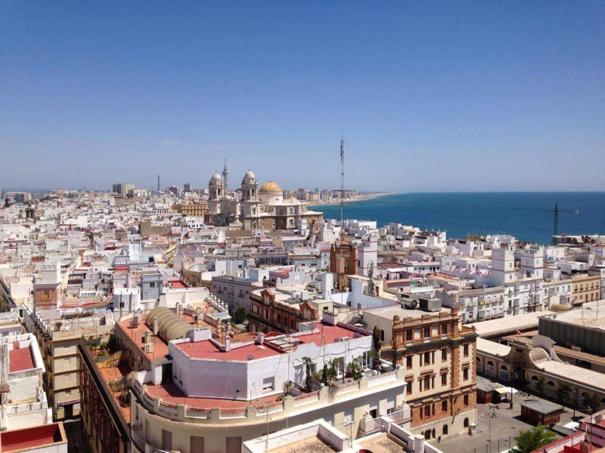

It was the pearly shores of Cádiz, Spain, which formed the second half of my Year Abroad just over a year ago, and I can’t wait to one day return. This Andalusian treasure trove, located on the southern coast, not immensely far from our disputed territory of Gibraltar, is home to its fiercely proud “Gaditano” citizens. They have a fondness for good food (at disconcertingly small prices!), flamenco, and spending quality time with the family al fresco, whether it be on the beach, in the public squares, or congregated outside a tapas bar. Despite the overall friendliness of the locals, Cádiz is not without its amicable rivalry. The residents of the old part of the town, with its impressive and varied architecture, claim to be from “Cádiz Cádiz”, a phrase used for emphasis to mean REAL Cádiz. They instead ascribe “Cádiz” (singular) to the modern part of the city which, it has to be said, boasts little more than multitudinous highrises and a McDonalds!
The old part of the city, however, has much historical significance. Christopher Columbus famously docked there on his voyage to the New World. It was also the location of a raid during the Anglo-Spanish war, when England was under Elizabethan rule. More recently, however, it has lent itself to popular culture. La Caleta beach and surrounding area doubled as Havana, Cuba in the location shooting of the James Bond film, “Die Another Day”. (Remember Halle Berry rising from the water to greet an on-looking Pierce Brosnan?) Most recently, Cádiz has also captured the interest of Hotelier and Traveller, Alex Polizzi, and celebrity chef, Rick Stein, for their respective TV programmes.
In terms of Cádiz’s steadfast traditions, the citizens come into their own as they celebrate their famed Carnaval, where many groups of people take to the streets in costume and show off their singing and dancing skills (most often with a satirical edge!). Another highlight in the calendar is the celebration of Semana Santa (Holy Week) where people take to the streets to watch the parading of religious idols by blind men, an awe-inspiring act of religious sufferance.
In terms of my placement, I had the good fortune of attending the University of Cádiz, which has the rare advantage of being right opposite the sea, with the quaint aforementioned La Caleta beach literally minutes away.
I also relished the opportunity to go on trips with fellow ERASMUS students, organised by the University (ESN), at modest prices. To satisfy my curiosity, I took a day-trip with them to Gibraltar, a place which has to be seen to be believed. The local llanito language (a haphazard conflation of spoken English and Spanish) really is the stuff of fiction! I also enjoyed more exotic trips to Seville, and Córdoba, to name but a few!
One of my final experiences in Cádiz was going to watch a traditional flamenco show at “La Peña Flamenca”, a two-hour performance of ceaseless, passionate dancing to cheering crowds. The building is dedicated to the gypsy performer, Antonia Gilabert Vargas. In much the same way as she was described as “La Perla de Cádiz” (The Pearl of Cádiz), I would like to consecrate the city with the title “The Pearl of Spain”. Cádiz, nos vemos Pronto!
Role: Culture Editor
Course: BA Modern Languages with Film Studies
Languages: French and Spanish

Favourite foreign film: Baisers Volés (French)
Favourite foreign musician: Charles Aznavour (French)
Sunset in CádizLeaving for the start of your year abroad feels like the beginning of an adventure to explore somewhere completely new. The chance to live in a foreign country with a different culture, language and people can be exciting but it can also be a shock to the system –something we are warned about and know to prepare for. My complete immersion into Beijing life made for an exhilarating and unforgettable year abroad, but focusing so much on the good times means that, one year later, it can be easy to forget what it’s actually like when we come home for good.
After surviving a year abroad, you don’t think about being unprepared upon returning home, but it happens more frequently than you’d think – it being ‘reverse culture shock’. Sometimes, it can be this weird feeling you can’t put your finger on that comes in waves of lethargy, sadness, awkwardness. Or it can simply be the feeling of being overwhelmed, because who’d have thought you wouldn’t adapt straight away to life back home? Maybe it is well-meaning friends, who are excited to see you after a year apart, but this can add to the pressure to settle straight in and get on with it. Social media only goes so far in telling the story; ‘so what was China like?’ began to be my most dreaded question. How can you begin to explain a year’s worth of memories and emotions into something shorter than a TED talk?

The little things you notice about your own culture are thrown into stark relief compared to what you had previously become accustomed to, for better and for worse. I’d forgotten about the cringe-worthy pavement dance with strangers that we do; a stark contrast to the pushing and shoving on the Beijing subway, but this awkward politeness also reminded me of why I missed home. The pace of life may seem slower in the UK than on your year abroad, which feels like every day is an adventure, a challenge to discover and try something new. It was a continuous adrenaline rush and I was an addict; suddenly away from it all – cold turkey – I was having major withdrawal symptoms.
Beijing
myself and I. Coming home after a year of care-free travelling, I was back living with my parents in the middle of the countryside compared to the constant hustle of Beijing. For a year, I hadn’t had to ask my parents for a lift into town, when the subway in Beijing was a convenient 10 minutes away. What’s more, you’ve changed, as has everyone else at home. I’d learnt to be independent, fend for myself and survive 33-hour train journeys. But I had also missed out on so much of other people’s livesrelationships, graduation, new jobs, even babies! – as they have missed out on mine. Everything is the same but it isn’t.
Just remember, it’s ok to get reverse culture shock –relax for the first few days at home, get back into a routine, make plans with your friends that you can look forward to. Go back and revisit your favourite haunts and gorge yourself on all the food you have missed. You might miss your home from home and your friends from across the globe, but you’re all the better for this marvellous experience we call ‘Year Abroad’. And don’t forget to smile -whether it’s the memories of your crazy time away or just the surrealness of finally coming home…
Role: Travel & Chinese Editor
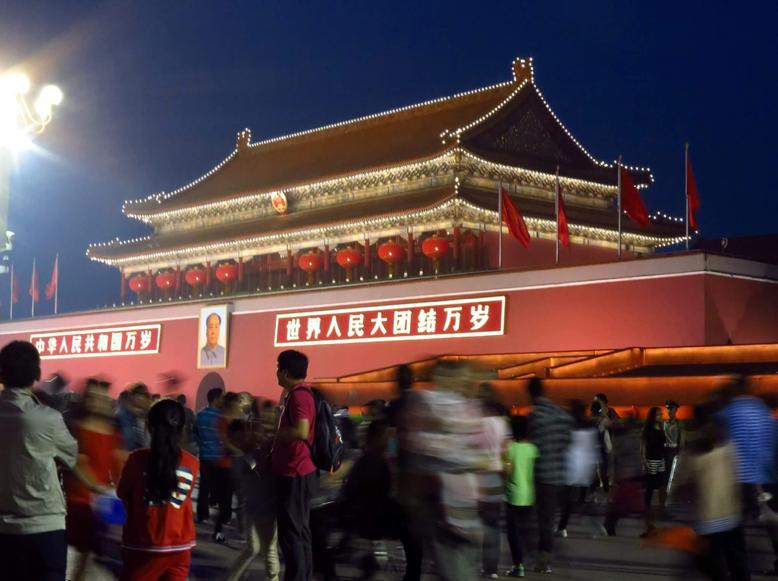
Course: BA Modern Languages with Business Management
Languages: French, Chinese, Spanish

Favourite holiday memory: Waking up after a night of camping on the wild section of the Great Wall
Favourite foreign custom: “goûter” – afternoon snack in France
Top travel tip: Travel solo and say yes to everything (most things)
Favourite foreign sports team/player: Beijing Guo’an football team


Whenever I told people I would be spending my summer studying in Seoul, South Korea, my words were met with shocked, confused faces, impressed expressions, and many questions of ‘Why South Korea?’ These reactions surprised me – I felt as if I had told them I was going to a different planet. Sure, Seoul is no Amsterdam or Paris, destinations to which young European adults flock to in their thousands. The city (and country) certainly smacks of the exotic, the unfamiliar, and of the extremely foreign, meaning it is often missed out on many travel itineraries. Being on the other side of the world doesn’t help, either, and the threat from North Korea is a real concern currently saturating through news stations and public opinion. So why South Korea indeed? Having spent six weeks in the beating heart of the capital, I could write you an essay on why I made this choice and why, given the opportunity, I would make it again. But for the moment, here are just six reasons to visit Seoul, from an insider’s perspective.
4)Free Wi-Fi Everywhere - If you don’t have a Korean SIM for the duration of your trip (like me), it’s easy to survive relying solely on public Wi-Fi as free Wi-Fi spots are available in most tourist locations. Free Wi-Fi is also available in nearly all cafés and restaurants, and roads and underground stations have it too.
5)Cafés (but on another level)
-Most of us have heard of cat cafés and dog cafés, but what about raccoon cafés? Meercat cafés? Sheep cafés? Seoul is the place to try weird and wonderful cafés, from the atmospheric to the simply strange (poop café anyone?). Most cafés will require you to pay an entrance fee, but many offer a free drink with your ticket!
6) Experience K-Pop!
Ever heard of K-Pop, the Korean music genre that’s hitting number one spots on Billboard and receiving millions of views on YouTube? Seoul is the heart of the music scene, and here you can immerse yourself in K-Pop through watching street performances, attending music shows, and listening to popular songs while relaxing in cafés or restaurants.

1)Street Food Paradise - From grilled skewered squid, to poop-shaped choco-bread, Seoul offers one of the largest selections of street foods in South Korea. Savoury, spicy, or sweet, there’s something for everyone at an affordable price (though beware, stalls in the same area will sell the same product, but at different prices. Hunt for bargains!). Part of the fun is watching the vendor cook the food right before your eyes!
2)Treasure Trove of Museums - Seoul is a city that keeps its history alive and relevant, with many free museums and galleries. A must-see is the War and Women’s Human Rights Museum, which tells the incredibly touching stories of ‘Comfort Women’, women forced to work as sex slaves by the Japanese occupational forces before and during WWII. Be warned: you may cry.
3)Great Skincare - South Korea brought us the BB Cream and the cushion foundation, and their multiplestep skincare routine is gaining popularity worldwide for its visible results. Although some Korean skincare products are available for purchase online, shipping is expensive and the range can be limited. Buying skincare in Korea means discounts, a huge range of brands and deals, and freebies! The more you spend in a store, the more freebies you get.
Street food in Insadong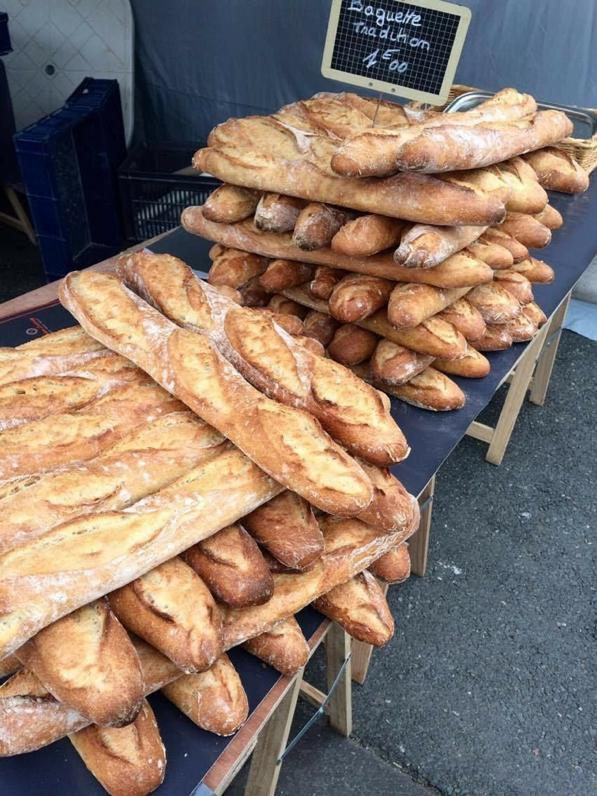
There are few things worth sacrificing a Saturday morning lie-in for like an aimless wander through a maze of cheese, freshly-baked patisseries (enough to rival any waft coming from Sainsbury’s bread section) and stillsquirming crabs. The phenomenon of the French market is a historic ritual for both young and old – only in France does one witness the bizarrely heart-warming sight of a teenager transporting a dozen baguettes home via hoverboard. For those who fear being overwhelmed by frog’s legs, snails and chicken feet; this is far from the reality!
A trip to the market is undoubtedly one of the best ways to discover (and sample) the finest local delicacies; from fresh fruit and vegetables, delectable cake creations, to (of course) innumerable types of French cheese.
The produce on display at the market is certainly a testament to France’s terroir. This quintessentially French concept (loosely translating as ‘sense of place’), traditionally refers to the magical combination of terrain, climate, local knowledge and tradition, imparting unique character and flavour to the nation’s wines. Nowadays, the term has come to celebrate the regional variation and beauty of France’s culinary produce.
Many would argue that preserving the notion of the terroir has never been so important. The rise of chain supermarkets and their increase in popularity among French consumers, has devastatingly led to the decline in number of France’s fromageries, and the extinction of more than fifty varieties of cheese. Today, a mere ten percent of French cheese is authentically made with lait cru (unpasteurised milk). Opting for market produce (largely organic, seasonal and often considerably cheaper) not only helps to support local farmers and independent producers, but also to preserve a defining feature of France’s gastronomic heritage!
Of the reputed 10,000 French markets, some are renowned for being particularly special. The word on the grapevine is that the Saturday morning market in Rennes is an unmissable spectacle. If the chance to snaffle a true Breton galette, (a savoury crepe originating from Brittany) isn’t sufficiently tempting, the traders of Aix-en-Provence are equally well-practiced in seducing hungry tourists (myself included).
Alongside gifts of raclette and salty ham, the tranquil setting is sometimes even complemented by the sounds of an accordionist. Many markets are also havens of vintage garments, books and other miscellaneous knickknacks! The Marché aux Fleurs in Paris warrants a visit for its flowers alone.
One of the most memorable experiences of my year abroad was visiting La Rochelle, a city on the western coast. Stumbling across punnets of fresh pineapple and watermelon felt close to discovering some sort of paradise! The surrounding cafés were over-spilling with locals catching up over a morning coffee. A reminder that the markets are far more than just for groceries, and often function as an important social gathering for the community.
Undeniably, a visit during festive season is a must (even for the scrooges among us!). There is nothing quite like a goblet (or several) of vin chaud and copious quantities of nougat to incite festive spirit. The opening of my local Christmas market in the city of Angers was significantly enhanced by the arrival of a parachuting Father Christmas. Strasbourg, known as the ‘Capital of Christmas’, is definitely the place to head.
The magic of the market ultimately lies with the fact that no two are completely alike. Despite multiple attempts, the sounds, smells, and general hustle and bustle all remain impossible to capture on camera – the only way to experience their buzz is by visiting! The trick is to get there early as to give oneself ample time to soak up the atmosphere (and indulge upon all the free tasters).
Role: Food & Drink Editor

Course: JH French & History
Languages: French
Favourite foreign film: Les intouchables (French)
Favourite foreign food: Dahl. Also have a dangerous obsession with pain aux raisins
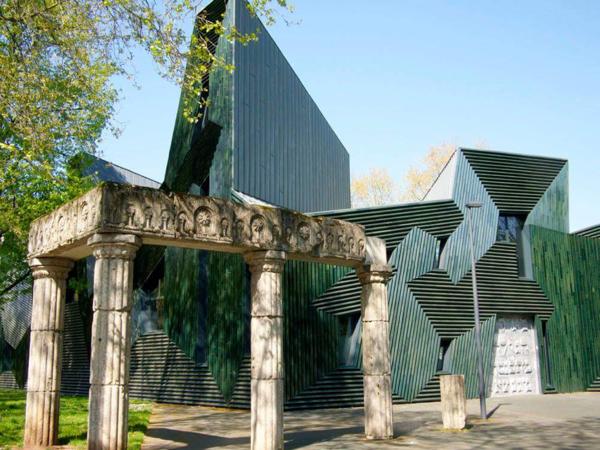

I was extremely lucky to spend the summer semester of my year abroad studying in the charming city of Mainz, Germany. Situated on the banks of the river Rhine, the city is steeped in history and, although relatively small, holds a host of attractions for any visitor.
Mainz is especially known for being the birthplace of Johannes Gutenberg, who ushered in a new age of mass media in the 15th Century, following his invention of the first printing press with movable type. You really cannot avoid references to Gutenberg throughout the city: there are multiple statues, the university is named after him, and best of all, there is the Gutenberg Museum. This fantastic museum is dedicated to the history of printing and, as well as the mountains of information to absorb, you can watch demonstrations on a replica Gutenberg press, see short documentaries in the cinema room and visit the star exhibit: two original Gutenberg Bibles in the secure vault at the centre of the building.
If the history of books isn’t your cup of tea, there are plenty of other attractions to visit in Mainz. Situated in the very centre of the atmospheric Old Town, the cathedral is a wonderful mix of architectural styles. Built over 1000 years ago in a Romanesque style, it has been added to and adapted over the years. For example, its towers were built in a Gothic style, and other additions are Baroque.
Another nearby place worth a visit is the church of St. Stephan. A pretty building from the outside, it nevertheless gives away no hint as to its stunning interior. The stained-glass windows were made by Marc Chagall using blue tinted glass, meaning the whole church glows with blue light.
In the New Town area of the city, there is an amazing synagogue that was built in 2010. Shaped in such a way that it echoes a Hebrew word meaning ‘raising’ or ‘blessing’, the building is striking in its modernity. It is clad in ceramic green tiles, giving the exterior an everchanging hue as you walk around it. The contrast with the fragmented columns of the original synagogue, built in the early 20th Century and destroyed by the Nazis in 1938, is a potent reminder that synagogues were not always so welcome in the city.
German Editor

BA Modern Languages

: German and Spanish
Favourite foreign TV show: Department Q (Danish)
Favourite foreign word: Muntermacher – literally ‘cheerful maker’ (German)
 Synagogue, Mainz
Synagogue, Mainz


Having always lived in the city as a native, I find it interesting comparing my experience to one of a tourist’s. Naturally and expectedly, the nostalgia and sense of belonging which accompany me throughout my stay there, are not part of theirs. I was given the impression that most of the tourists I’ve spoken to never fully immersed themselves in the authentic Florence. However, there is an obvious difference when comparing experiences of such different nature, the gap between what the locals think are well-known and typical attractions for a tourist and what the tourists get to experience seems to be surprisingly wider than for any other city I’ve had this conversation about.


The reason behind this is probably one so simple that it could be very easily overlooked. Due to its nature and dimensions, Florence is so saturated with art, culture and traditions that it’s quite challenging to wrap your head around all of it, especially if you’re less familiar with Italian lifestyle and habits. Of course, it’s easy to rely on the thousands of articles already out there, but here are some top tips, as a native of the city.
First and foremost, do not be afraid to ask the locals, especially when it comes to food. Florentines tend to be very welcoming: once confronted with the initial language boundaries, they’ll probably try to answer by gesturing in true Italian fashion. Ask your waiter for recommended wines to compliment a certain dish or, better yet, ask for the vino della casa, or wine of the house: you won’t be disappointed by any red served to you. Experience food as much as you can and do not miss the meat. Other typical dishes I’d recommend are crostini with kale and beans, crostini toscani, Florentine tripe, tagliatelle with boar ragù, and gli gnudi (nettle gnocchi). If you have a bit of a sweet tooth, aim for cantuccini e vin santo, typical biscuits enjoyed dipped in a sweet dessert wine.
Secondly, try to avoid getting coffee or ice-cream in the centre. It’s overpriced, and honestly not worth it. If you’re a gelato lover to the point you’re willing to go the extra mile, “Badiani” is the place to go. This multi-award winning gelateria is situated in Via Dei Mille, close to Piazzale delle Cure. Although it’s not the best-looking area, the bontalenti flavour they invented is worth the hustle of moving away from the centre. Beware of the coperto (price added for sitting down) which is normally around 1€-2€ but could rise up to 3€ in the centre or in Fiesole.
Try and go to Fiesole, a small town on one of the hills overlooking Florence. It’s easily reached by bus and the view is breath-taking to say the least. The same goes for Piazzale Micheleangelo, another incredibly beautiful view spot. If you get the chance, do visit the whole Museo del Duomo from the inside, including all of the buildings in the Duomo square.
And lastly, if you’re looking for a bit of luck during your stay, a few streets away from Piazzale della Signoria, you’ll find la Loggia del Mercato Nuovo in which resides the famous statue of the Porcellino. Caressing the boar’s nose will give you good fortune, and if you place a coin in its mouth and it falls in the grate underneath, it is said you’ll either be getting married soon or gain good luck, depending on the storyteller.
My very final piece of advice is to try and move by foot as much as possible, for the beauty of the city lies in every single bit of it. Buon viaggio!
For a country with such a vast and grand history as Russia, the city of Saint Petersburg is relatively young, although in the roughly 350 years since its birth it has seen more history, culture, and transformation than many other cities witness in a millennium. As a beginner Russian student, I and my classmates were offered the opportunity to spend a month in the city in order to improve our language skills and explore Russian culture.
We travelled to Saint Petersburg in the peak of summer from around June to July, when the White Nights phenomenon means that the sun barely sets and that there is plenty of time in the day to see Saint Petersburg’s most famous and lesser known tourist sites. No trip to Saint Petersburg would be complete without a trip to the Winter Palace, which opened to the public as the Hermitage museum in 1852 and is the home of the masterpieces of Da Vinci, Picasso, and Rembrandt, whereas the world-renowned Russian Museum which is only a few minutes’ walk away displays the homegrown talent of Russian citizens. The city itself is a work of art, too. From the glimmering domes of the Church of the Saviour on Spilled Blood to the imposing walls of Saint Isaac’s Cathedral from which the whole city can be seen, our trip came at a very low cost, as especially with the advantage of a student card the majority of these places were free to enter!
There is also lots to offer if you decide to take a break from all of the art, as you can take a walk down Nevsky Prospekt straight opposite the Hermitage to discover an endless variety of restaurants and shops, including those more familiar in the West. On the other hand, a taste of authentic Russian cuisine comes at a very low cost, too, as stolovayas – or cafeterias – are littered on every street corner, offering a batch of Russian pancakes, pastries, and cakes for less than a pound each. For something a little more exotic, the vodka museum is only a few minutes’ walk away from the north end of Nevsky Prospekt, and allows you to taste three different authentic Russian vodkas whilst perusing the history of vodka in its homeland.
If you’re willing to venture a bit further out from the centre of the city, you can take a short metro ride to Tsarskoe Selo in Pushkin, which is home to the Catherine Palace, which itself was once home to the Imperial Family. If you cross the bridge from the Hermitage, however, you can reach a bay from which you can take a short boat ride across to the Baltic sea shore for as little as 1000 roubles (about £12) and explore the Peterhof gardens and palace. The city has been nicknamed the Window to the West due to being inspired by Venice in its creation, but it deserves far more credit than that. Saint Petersburg has something to offer for anyone regardless of their interests, and you might even pick up a bit of Russian along the way.
Role: Russian Editor

Course: BA Modern Languages

Languages: Spanish and Russian
Favourite foreign artist: Pablo Picasso
Favourite foreign phrase: galstuk-babochka –literally
butterfly tie, but bow tie (Russian)
Favourite holiday memory: When I was in saint Petersburg the sun didn’t set for the whole of summer and it was wonderful to walk down the river in the middle of the night and see palaces and shops and architecture that never close.
“Saint Petersburg is relatively young, although in the roughly 350 years since its birth it has seen more history, culture, and transformation than many other cities witness in a millennium”

You might be thinking of applying to study at university in Barcelona, or perhaps you’re planning on doing a work placement and are considering Catalonia as one of your options… Or maybe the thought has never even entered your head. Whatever your current thoughts and feelings, I’m here to tell you why choosing to spend a year in Catalonia is one of the best decisions you could possibly make.
First thing first, the food. It’s AMAZING. Along with all the typical food such as paella, tortilla de patatas, and patatas bravas that you would expect to find in Spain, Catalonia has its very own food culture. There is no better way to begin the day than with a few slices of Catalonia’s flagship dish, pa amb tomàquet – bread with tomato, drizzled with olive oil and then sprinkled with a pinch of salt –accompanied by some fuet, Catalonia’s take on chorizo. For the more adventurous soul, there are cargols a la llauna – or snails. Popularly associated with French cuisine, snails are a speciality of the province of Lleida where they are usually served accompanied by allioli and vinegar for dipping.
However, if you prefer a leisurely break to the busyness of the bustling city, do not despair. To the south of Barcelona lie the sandy beaches of the Costa Daurada, while to the north you are spoilt for choice with plenty of cosy coves and picturesque towns such as Blanes and Cadaqués lining the region's Costa Brava coastline. Not to mention, during the winter months, the snowy slopes of the Pyrenees are a short hop away, perfect for a weekend skiing.
Catalonia is also home to some intriguing traditions. One of the most famous ones is Els Castells, or the human towers. Originating in the town of Valls, near Tarragona, these human towers can be as high as nine or ten stories! Or for anyone of a more daring disposition, participating in a correfoc (fire run) is an opportunity that just cannot be turned down – what’s not to love about running through the streets with people dressed up as devils holding flaming pitchforks setting off fireworks all around you?

Whatever your interests, hobbies, or personal tastes, Catalonia really does have something to offer for everyone. More enticing than that, however, is the amazing opportunity to discover and become a part of a culture that, despite the popularity of Barcelona as a tourist destination, remains relatively unknown, even today. T'hi apuntes?

Course: BA Modern Languages
Languages: French, Spanish, Catalan
Favourite foreign town: Blanes, Catalonia
Favourite foreign band: Txarango, Catalan reggae fusion band
Dream holiday destination: Patagonia, Argentina
cargols a la llauna

society welcomes you! Throughout the year we will be putting on regular social events, nights out and trips around the UK to help you meet new friends and make your year abroad an unforgettable experience. We will also be running regular support sessions to help with any concerns or questions that you have about your time here. If you want any more information then you can find us on Facebook, Instagram or send us an email. But for now, make sure you sign up here:
https://www.guildofstudents.com/studentgroups/societies/studentexchange
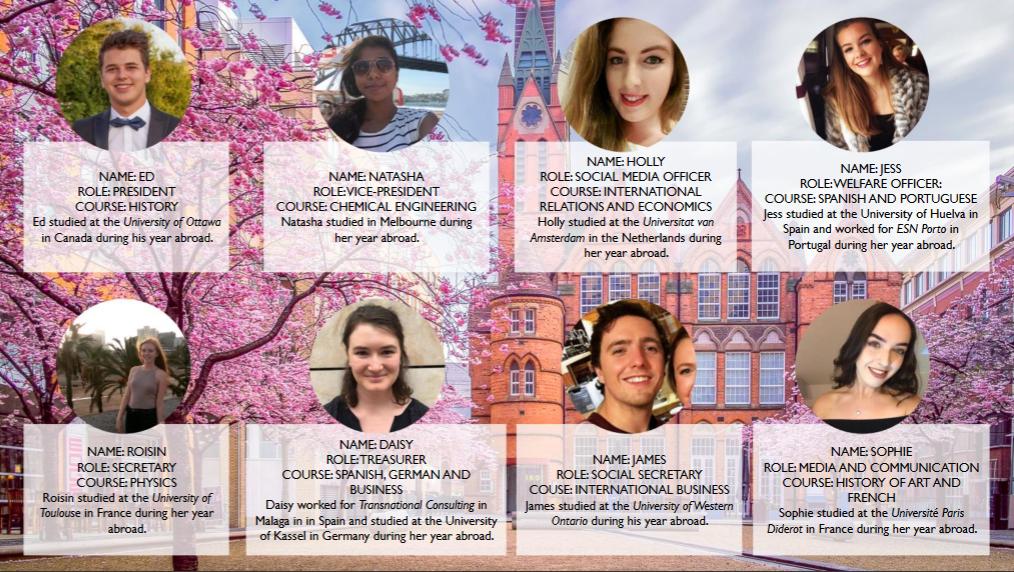

We hope that you have a great year, and look forward to meeting you all soon!






















